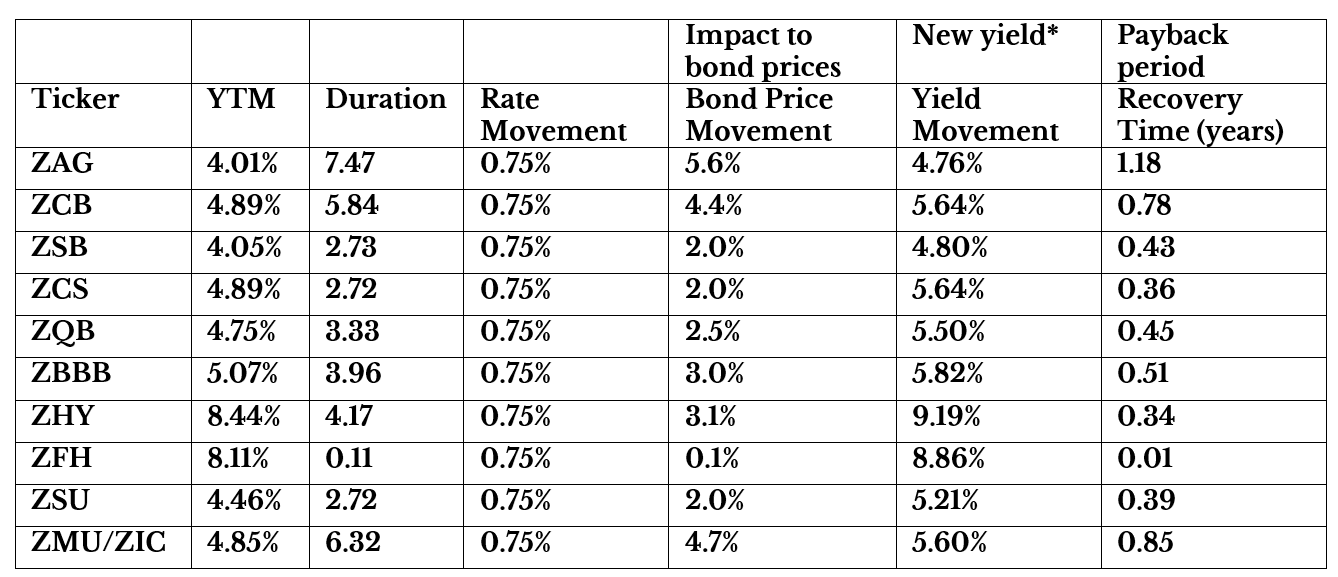

| By Daniel Stanley, Director, Institutional & Advisory, BMO ETFs |
With bond markets still a challenge, Daniel Stanley, Director, Institutional & Advisory, BMO ETFs talks investors through the benefits of executing active strategies with passive index exposures.
Perception arbitrage: From outdated views to new realities
History has a habit of rendering the popular truths of one generation obsolete in the next. Case in point: one widely held belief that’s rapidly fading is the idea that ETFs merely offer passive access to a broad asset class. The current reality is quite different.
Today, fixed income ETFs are often used by institutional portfolio managers to execute their larger bond portfolios. Index construction is more targeted and creative than a generation, or even a decade, earlier. The fact is fixed income ETFs can now provide precise exposures along the Yield Curve, segmented by term and by credit quality. Managers can express their active investment objectives using precisely defined baskets tilted towards their desired exposures.
Nowhere in the portfolio is this truer than in fixed income, where the bond market can be segmented into ever more precise segments to allow for greater portfolio customization.
Today, fixed income ETF are often used by institutional portfolio managers to execute their larger bond portfolios.
Executing quickly within the bond universe
At BMO ETFs, all our major bond strategies are divided by their investment horizon and by their credit quality. You can invest in short, medium and long-term exposures for both corporate and government securities, and the latter can be further divided into federal and provincials.
Consider duration as a prime example. Since the Bank of Canada and U.S. Federal Reserve began raising interest rates earlier this year, there has been downward pressure on the value of long-duration government bonds. If you wanted to quickly change your duration, a single trade out and a complementary trade in would pivot from one point on the yield to another. Two trades could tilt from Short Corporate (ZCS) to Long Federal (ZFL), potentially at a tighter spread than could be accomplished with cash bonds.
It is also been important to consider how quickly you can adjust credit quality when market conditions evolve—as has happened repeatedly in 2022. For example, if a recession is viewed as imminent, you may want to upgrade the credit quality of your bonds from investment grade to government, but with a yield component that’s still relatively attractive. This may put you in the mid provincial bond space, where the payouts are more substantial than with federals.
What is the optimal process for executing this trade? Rather than pricing each of the 20 or so underlying bonds individually, efficiencies can be found by relying on precise, single-ticket exposures such as the BMO Mid Provincial Bond Index ETF (Ticker: ZMP). Buying the bonds directly can be costly and time-consuming, and that information would leak to the street in drips thus revealing the shift in positioning. By contrast, an ETF allows active portfolio managers to painlessly add or trim their exposure to achieve a tactical objective.
If broad beta is the hammer in your investment toolkit, smart beta is everything else.
Adding extra liquidity to your portfolios
Another advantage of executing bond portfolios this way is the increased liquidity. When problems arise in the bond market, as they did in March of 2020, liquidity challenges in the underlying bonds are unlikely to impact the ETF holder. The bond ETF is akin to a pressure release valve—it provides price discovery and acts like a market clearing mechanism during times of stress.
For example, in a falling market, an active manager who manages a balanced portfolio may be unable to rebalance from bonds to equities. But with ETFs there’s a secondary pool of investors to close the bid-ask spread, and the market continues functioning even if cash bonds stop trading.
In fact, we had a massive client sell $203 million of the BMO Aggregate Bond Index ETF (Ticker: ZAG) at the height of the panic, when most of the underlying bonds had ceased trading. It was a classic example of a massive trade that can be executed during times of huge stress in the market. The key is that ETFs actually provide liquidity at three levels:
- Natural liquidity – matching Sellers & Buyer across exchanges: units traded across Exchanges do so at tighter spreads because the units have already been constructed, so there is no trading in the underlying securities.
- ETF inventory: Market Makers hold inventory to fill excess Sell or Buy orders which cannot be filled through natural liquidity. Again, these trades are at tighter spreads because there is no trading in the underlying securities.
- Creation or redemption of ETF units. When the demand or supply for units exceeds order demand, units will be created or redeemed, just as they would in a pooled or mutual fund.
It’s also worth remembering that cash bonds trade over the counter, which means a strong relationship with a bond dealer—and, frankly, vast AUM—is required in order to receive optimal execution. ETFs, however, are much more accessible and transparent, they trade freely, and you can easily adapt the exposure to your tactical views.
To learn more about bond ETFs as a means to optimizing your portfolios, reach out to your BMO Institutional ETF Specialist.
Appendix
* That which is earned on a prospective basis (e&oe).
Figures as at September 9, 2022.
Note: Rate movement should reflect what the market has priced for a change.
Weighted Average Yield to Maturity: The market value weighted average yield to maturity includes the coupon payments and any capital gain or loss that the investor will realize by holding the bonds to maturity.
Disclosures:


